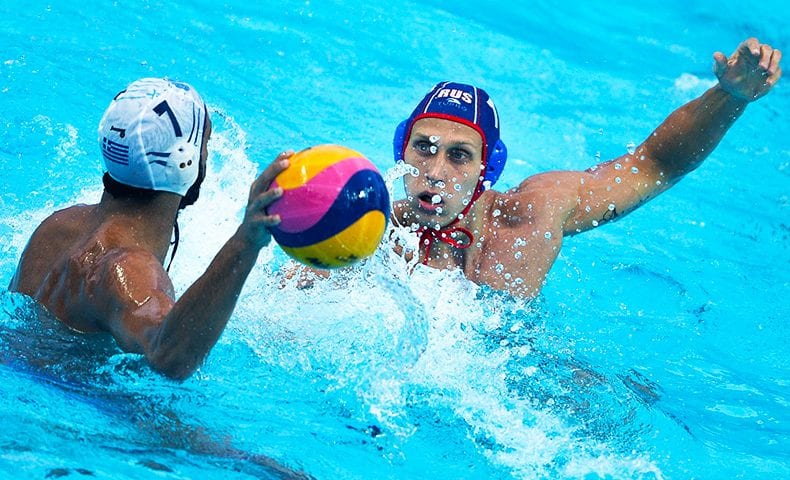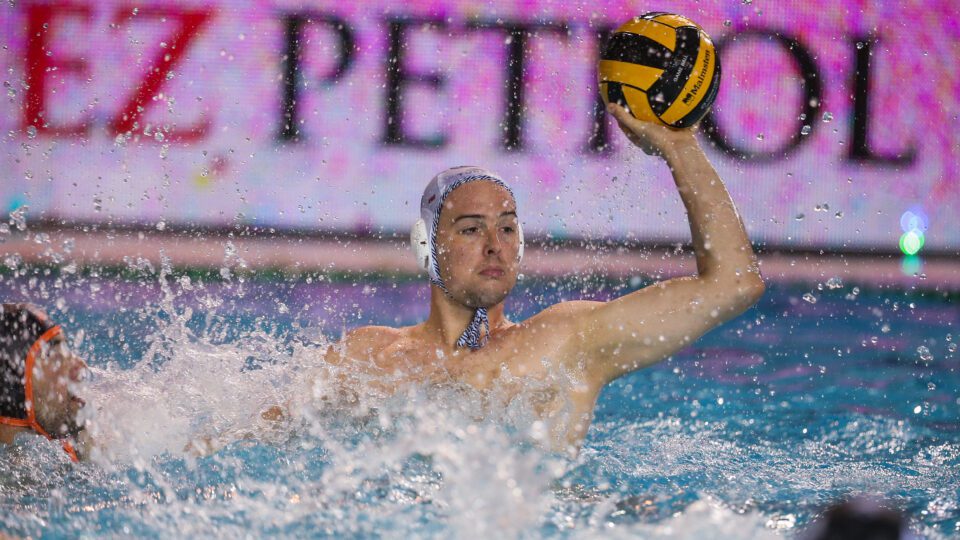From the core of Russian water polo, Igor Chekunov – Editor at Ruswaterpolo – gives his opinion about the new rules and their implementation.
At the beginning of January, the Russian National League put into force the new FINA rules introduced in December last year. More than 30 games have been played since then, so we can conclude and analyze them with enough material. The main one is that the matches had become more alluring and interesting both for the players and spectators. So, let’s take a look at the new rules more closely.
The Rules
1. Moving the 5-meter line to 6
The shift of the most important line in water polo has significantly reduced the number of shots taken after the free-throw whistle. On the average, there have been 2-3 attempts – like in those times when it was allowed to shoot from outside the 7-meter line. Because of a long distance to a goal, players tend to look for various attacking scenarios rather than deliberately trying to draw a free throw and shoot.
2. Allowing a player to shoot after putting a ball on the water (beyond 6 meters)
This innovation can safely be called the most radical, based on the games played. It gives more freedom not only to the players of the second line but to the center forwards as well. Defenders need to choose between dropping back and putting pressure on opponents who can move closer to the goal, fake and shoot without passing the ball to a teammate. As a result, players have more options in the attack area: center forwards tend to receive the ball more often while perimeter players have become more “independent”. There haven’t been many goals scored this way – on the average 1 in 2 games. It will take some time for players to adapt and take all the benefits from this rule.
3. Giving a penalty for a foul on an attacking player inside 6 meters
This innovation turned out to be the most noticeable. Due to the new interpretation, the number of penalties almost doubled. Some may call it a negative, but at the same time, the new rule brought a few important advantages. Being under pressure, the penalty defenders have started to play more carefully and that has given forwards more room for creative actions. The opportunity to earn a penalty encourages offensive players to drive, which makes the game more interesting. It contributes to more movement in the offense and reduces the number of long-distance shots. Moreover, under this rule, the significance of the defenders’ technical preparation has increased a lot.
4. Free throw shall be taken from the location of the ball
First of all, this rule has made a game easier both for players and spectators. There are no more pauses to bring the ball back to a place where the foul was committed. Secondly, the offensive team doesn’t slow down its pace while defenders have less time to regroup – again this makes water polo more dynamic and interesting.
5. Resetting position time to 20 seconds
The attacking team has only 20 seconds for possession after the corner throw, exclusion, or rebound. The reduction of this time means that a team can’t afford to build up its attack slowly, which speeds up the game’s pace. It’s important to note that after getting a foul, the offensive team’ players tend to forget that exclusion period is limited by possession time and they don’t have the extra couple of seconds to shoot until the excluded player comes back. The situations when the change in possession was signaled during 6 on 5 play, happened very often.
6. Allowing the goalkeeper to move beyond boundaries and touch the ball past the half-line
This innovation may be boldly called the most effective. Every time when a player in red cap swims into opponent’s half, it’s a thrilling sensation to everyone in the pool. Teams have actively used this rule both when it was a necessity and when the outcome was clear just to get a 7-on-6 in the attack. A few dozens matches have been played and we saw goalkeepers scoring, assisting and, of course, chasing an empty goal.
To keep up with water polo news from around the globe, follow us on Twitter and Facebook.






